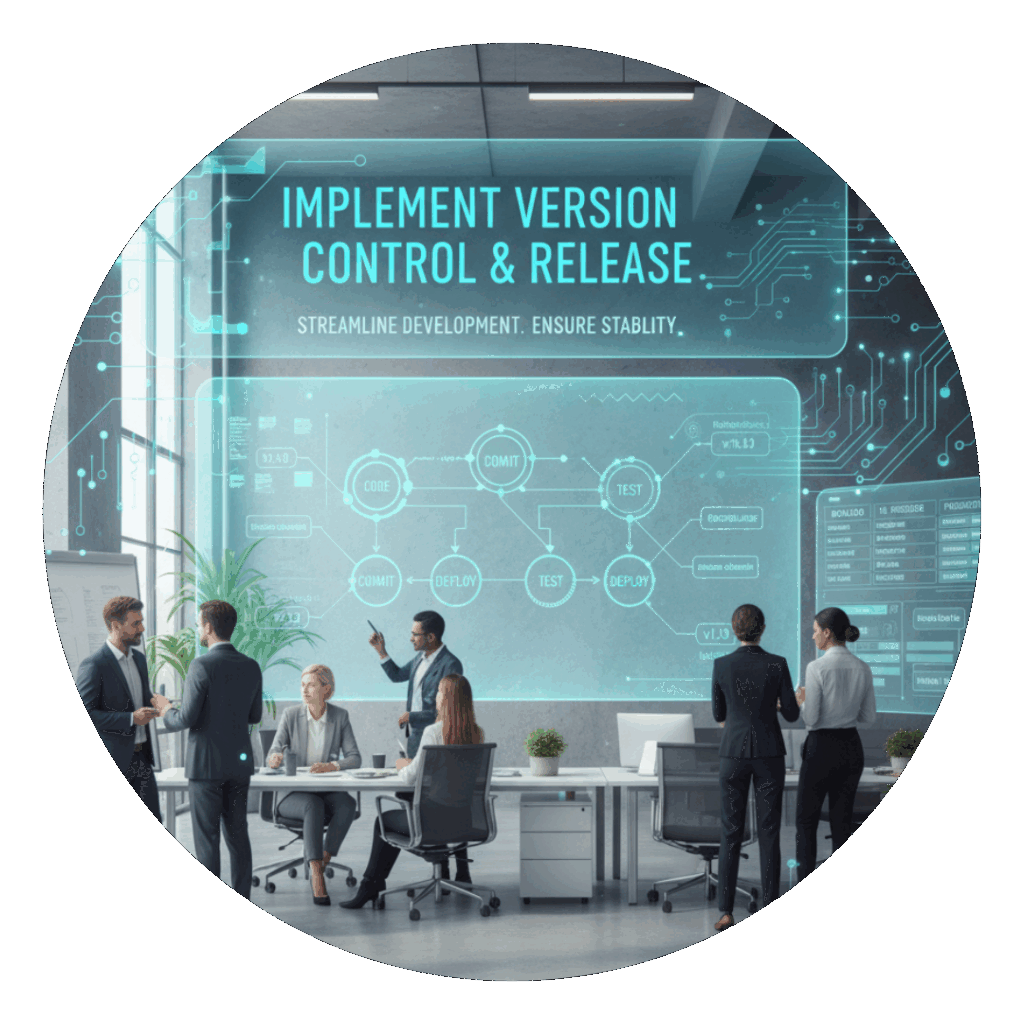Introduction
If you’re responsible for BI content in a listed company, the phrase SOX/IFRS 2026 compliance for BI applications should already be on your radar.
The rules coming into force mean auditors will expect not just accurate numbers, but demonstrable controls over the entire lifecycle of reporting applications, version history, rollback capability, secure access, and clear audit trails.
Imagine this: a month before your quarterly close, a developer pushes a change to a sales-report app that breaks historical calculations. There’s no reliable rollback, and the Section Access settings were altered by mistake. Now the finance team is scrambling, auditors are asking for timelines, and leadership wants answers.
Here’s the thing: that scenario is avoidable. In this post you’ll learn why the 2026 requirements are materially different from past compliance expectations, the specific BI governance gaps auditors will probe, and a practical roadmap you and your team can use to get ready.
I’ll share lessons I’ve seen across BI teams, the near-misses and the smart fixes, and explain how lifecycle control practices reduce audit risk while improving developer velocity. Along the way I’ll touch on how lifecycle control solutions (like those we build at Ebiexperts) map to your day-to-day needs without turning governance into bureaucracy. Let’s walk through what to prioritize, what to implement first, and how to demonstrate compliance cleanly to auditors.
SOX/IFRS 2026 compliance for BI applications: What’s new and why it matters
Regulatory expectations are shifting from spot-checks to demonstrable process controls. Auditors won’t just look at outputs, they’ll want evidence of how reports were developed, changed, and deployed. For BI teams this raises three immediate demands:
- traceability (who changed what and when),
- recoverability (safe rollback and backups), and
- access governance (who could see or modify sensitive data).
Here’s what’s different: previously, a static audit sample might be enough. In 2026, you’ll need continuous proof that your application lifecycle follows controlled processes. That means integrated version control, immutable audit logs, and reproducible deployment steps, Excel spreadsheets won’t cut it.
What I’ve noticed in the industry is that organizations that treat BI artifacts like software (with branches, reviews, and deployments) are the ones auditors trust fastest. It takes a bit of upfront work, but it removes late-night panic during audit season.
Common BI Team Pitfalls Auditors Look For
Let’s be honest, many BI teams weren’t built with this level of governance in mind. Typical gaps I encounter:
- No consistent version control: Developers overwrite each other’s work or maintain separate copies of the “truth.”
- Weak backup and rollback processes: Recovery is manual, slow, and error-prone.
- Section Access and permission drift: Security rules aren’t consistently maintained across environments.
- Invisible deployments: Production changes aren’t linked to tickets, reviewers, or approvals.
- Sparse audit trails: Logs exist, but they’re hard to read, incomplete, or can’t be tied back to a deployment.
Objections you’ll hear: “This will slow developers down,” or “Auditors don’t need such detail.” Both are understandable. But here’s the counter: governance that’s embedded into your lifecycle—automated, repeatable, and developer-friendly—tends to speed things up by reducing firefighting and repeated rework. It’s about working smarter, not bureaucratically.
Practical Steps to be Compliance-Ready (A Roadmap You Can Start This Quarter)
You don’t need a year-long project to make meaningful progress. Focus on concrete, prioritized controls:
1. Inventory & Classification

- Catalogue BI applications across Qlik, Power BI, SAP BO.
- Classify artifacts by sensitivity and regulatory impact.
2. Implement Version Control & Release

- Treat apps like code: maintain a single source of truth, use deployment controls for development, require peer reviews.
- Ensure metadata includes change reason, author, and ticket ID.
3. Establish Automated backups & Safe Rollback

- Schedule immutable backups of production app versions and related data model artifacts.
- Test restores quarterly so auditors see recoverability evidence.
4. Standardize Section Access & Permissions

- Centralize role definitions and propagate them automatically across environments.
- Keep a change log for security rule changes.
5. Build Auditable Deployment Pipelines

- Link deployments to tickets and approvals.
- Capture snapshots of artifacts at deployment time and store them with the release record.
6. Continuous Auditing & Monitoring (ongoing)

- Generate regular compliance reports: who changed what, successful vs failed deployments, backup health.
Small Wins You Can Achieve Within Days
- One team moves all production apps into version control.
- A restore drill proves a rollback in under x minutes.
- One critical report gets documented approvals and deployment records for a recent change.
How Lifecycle Control Solutions Map To Real BI Needs
Here’s where tools matter, but not as magic bullets. The right solution should reduce manual steps and provide evidence auditors accept.
Key Capabilities to Evaluate:
- Integrated versioning across platforms (Qlik, Power BI, SAP BO)
- Snapshot-based backups with restore testing
- Section Access governance and propagation
- Deployment orchestration with approval gates
- Immutable audit logs and exportable audit packages
Match These Capabilities to Your Personas:
- Report/App Developers: Want secure metadata structured storage repositories, easy diffs, and safe rollback when a change causes a regression.
- Platform/IT Administrators: Need scheduled backups, environment recovery, and controlled change windows.
- BI Team Leads/Managers: Need release control, auditability, and demonstrable policies to show auditors.
Mini Case Example:
A finance team found a balance-sheet error two days after a deployment. Because the team had implemented synchronous backups and a deployment pipeline, they reverted to the prior validated version and replayed the change in a sandbox. Audit evidence showed the rollback and the approval chain, the auditors were satisfied, and the incident became a teaching moment rather than a compliance failure.
Addressing Common Objections & Integration Concerns
Concern:
“Our stack is heterogeneous, will lifecycle controls fit?”
Answer:
Heterogeneous environments are the norm. Look for solutions that abstract the lifecycle across platforms so governance is consistent. You don’t want a different process for Qlik vs Power BI vs SAP BO.
Concern:
“Isn’t this expensive and complex?”
Answer:
There’s an upfront cost, but weigh that against audit fines, remediation costs, and the time lost during incidents. Start with the highest-risk apps and scale. Often the first phase pays for itself by reducing rework. Ebiexperts subscription is application/report based so you pay for what you control, only.
Concern:
“Won’t governance slow innovation?”
Answer:
Only if governance is heavy-handed. Good lifecycle control is developer-friendly: automated checks, fast rollbacks, and clear traceability let developers move faster with confidence.
Auditors don’t just want clean numbers, they want to see the process that produced them. Your technical controls are your best narrative.
Putting it into Action: A Short Checklist You Can Use Today
✓ Create an inventory of regulated BI assets within 14 days.
✓ Identify 3 high-risk reports and put them into version control first.
✓ Schedule an immediate restore drill for one critical report.
✓ Document Section Access rules and link them to roles.
✓ Set up a simple deployment pipeline with approvals for production changes.
✓ Export an audit package showing change history, backup snapshots, and deployment records — and review it with finance.
Conclusion
Getting ready for SOX/IFRS 2026 compliance for BI applications isn’t just a compliance exercise, it’s an opportunity to make your BI practice more resilient, auditable, and faster at delivering value. Start with clear inventory and priorities, bake versioning and backups into your workflow, and make deployment reproducible and reviewable. What I’ve noticed time and again is that teams who treat BI artifacts like software minimize crises and win auditors’ trust much faster.
If you’d like to see how lifecycle controls look in practice, consider a short walkthrough tailored to your stack and priorities. Book a 30 Min Demo with Taaz: https://cal.com/enablement-taaz/book-a-session, no hard sell, just a focused session to map compliance steps to your environment.


